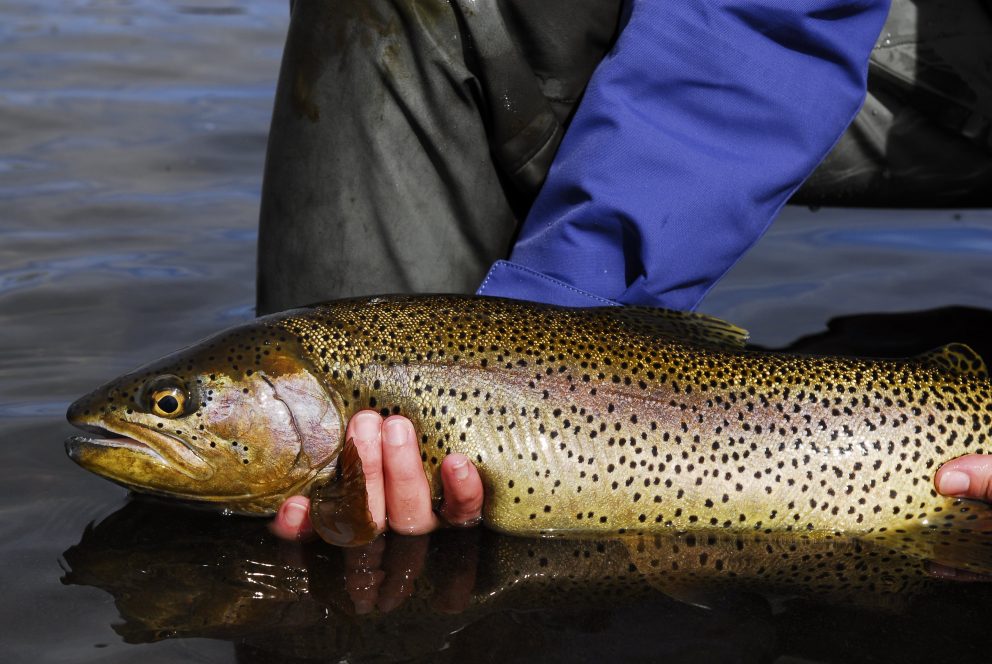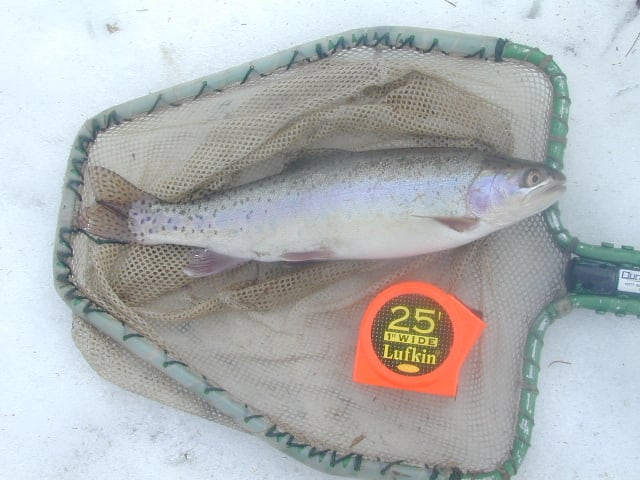- SCIENTIFIC NAME
- Oncorhynchus mykiss x Oncorhynchus clarkii
- CLASSIFICATION
- Fish
- LIFE SPAN
- 7-11 Years
- SIZE
- 16-36” | 0.5-24lbs
- STATE CONSERVATION STATUS
-
- Unprotected
- FEDERAL CONSERVATION STATUS
- Least Concern
- GAME STATUS
- Game
- Washoe
- Humboldt
- Pershing
- Churchill
- Mineral
- Lyon
- Douglas
- Carson City
- Storey
- Elko
- Lander
- Eureka
- White Pine
- Esmeralda
- Nye
- Lincoln
- Clark
Habitat & Range
Because it is predominantly stocked as a sterile hybrid, it has no native range. Bowcutts (or Cutbows) are produced in Nevada hatcheries and stocked throughout many larger lakes and reservoirs in northern Nevada. Natural Bowcutts can occur where Rainbow Trout and Cutthroat Trout coexist, usually in streams. This is normally referred to as introgression and is a leading cause for the reduction and/or elimination of Cutthroat Trout from their native range throughout the west.
Threats
- Bacterial Cold Water Disease
- BKD- Bacterial kidney disease
- Diseases in Hatchery Stocks: IHN-Infectious hematopoietic necrosis
- VHS-Viral hemorrhagic septicemia
- Whirling Disease
Natural History
Cutbow/ Bowcuts are native to the Columbia River. They were introduced as a hatchery fish in Nevada. Since they are a rainbow trout hybrid, they eat mostly small fish and invertebrates found in and around brush.
Fun Facts
Since Cutbow/ Bowcuuts are a hybrid, it makes thm almost immune to whirling disease.














